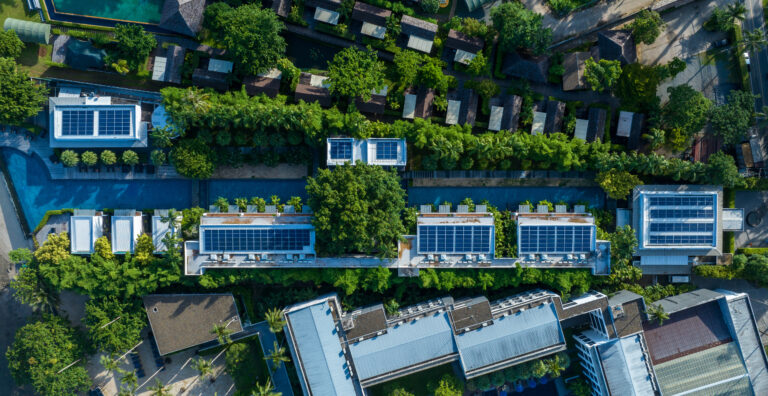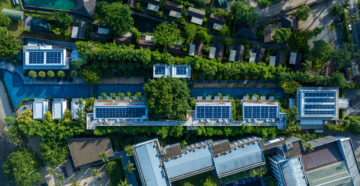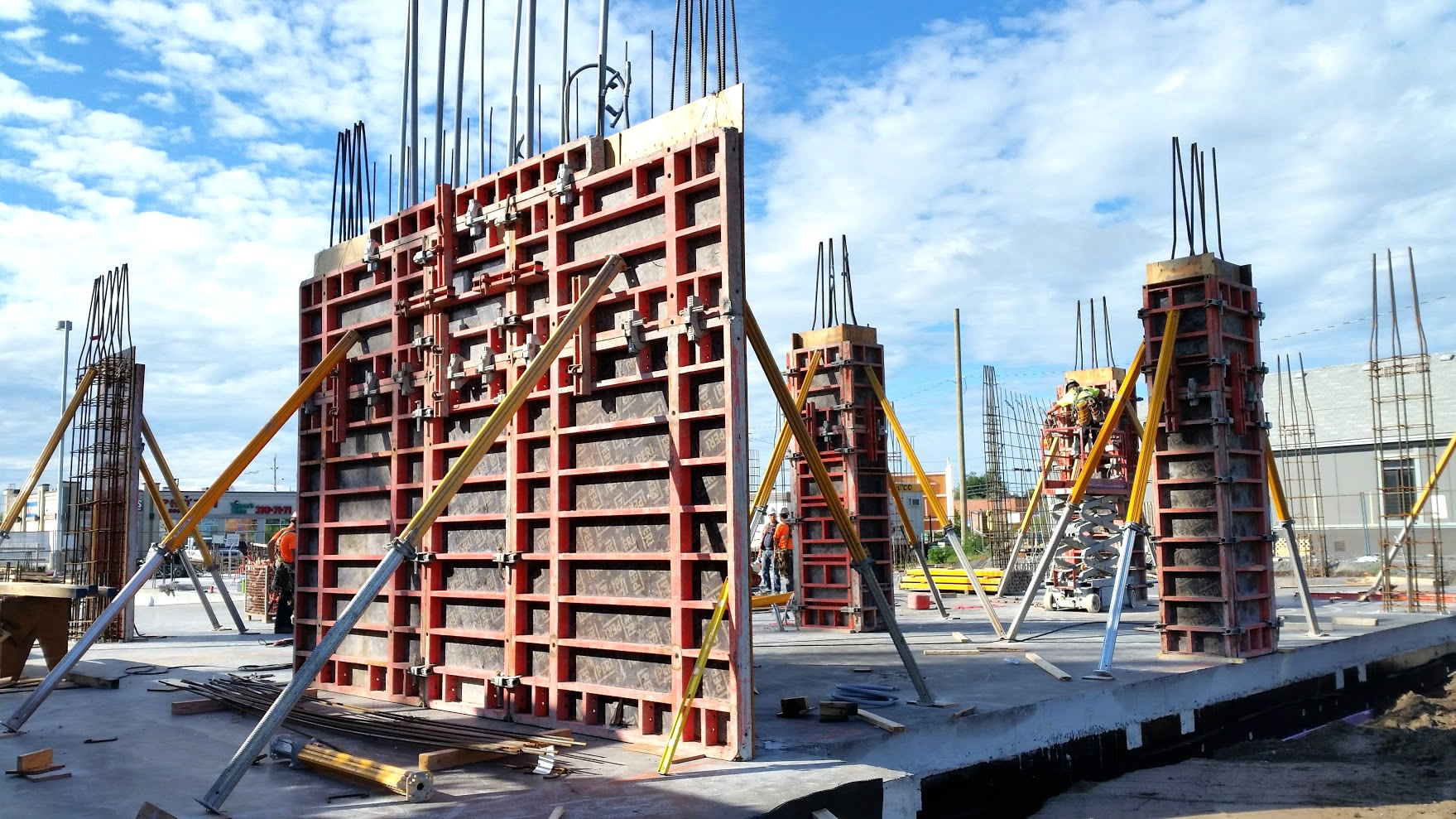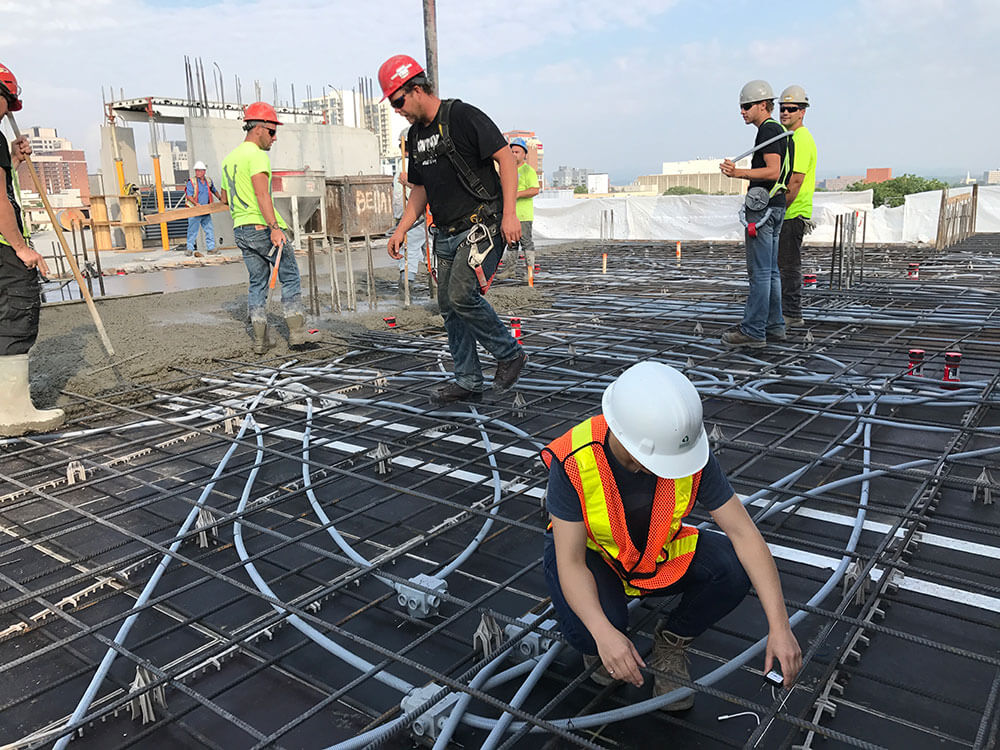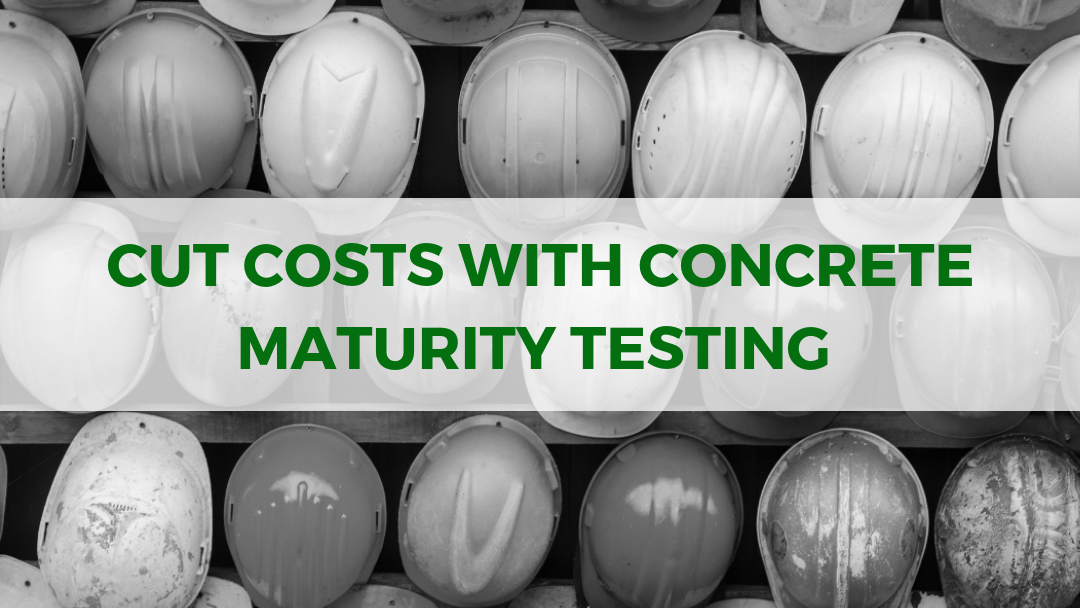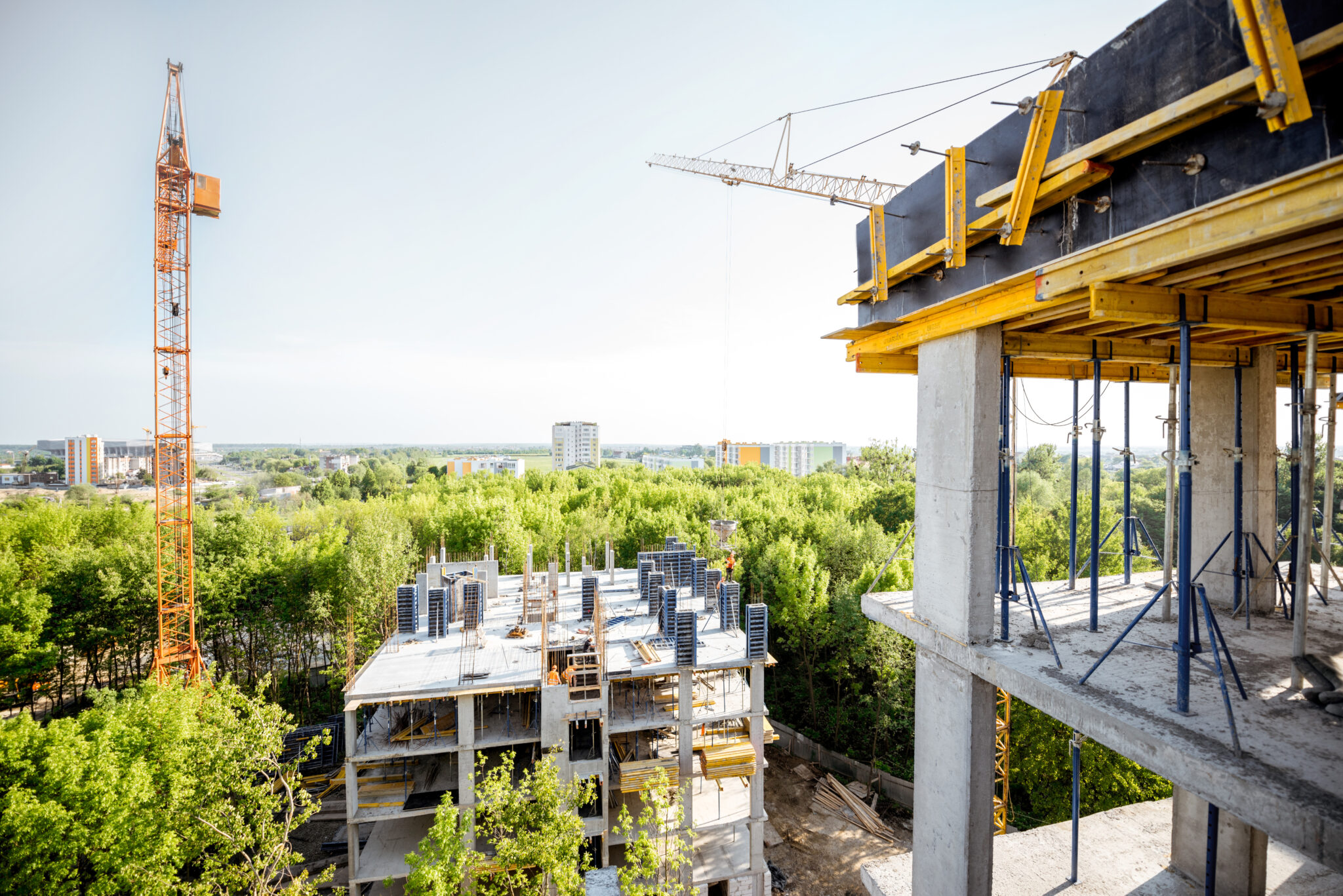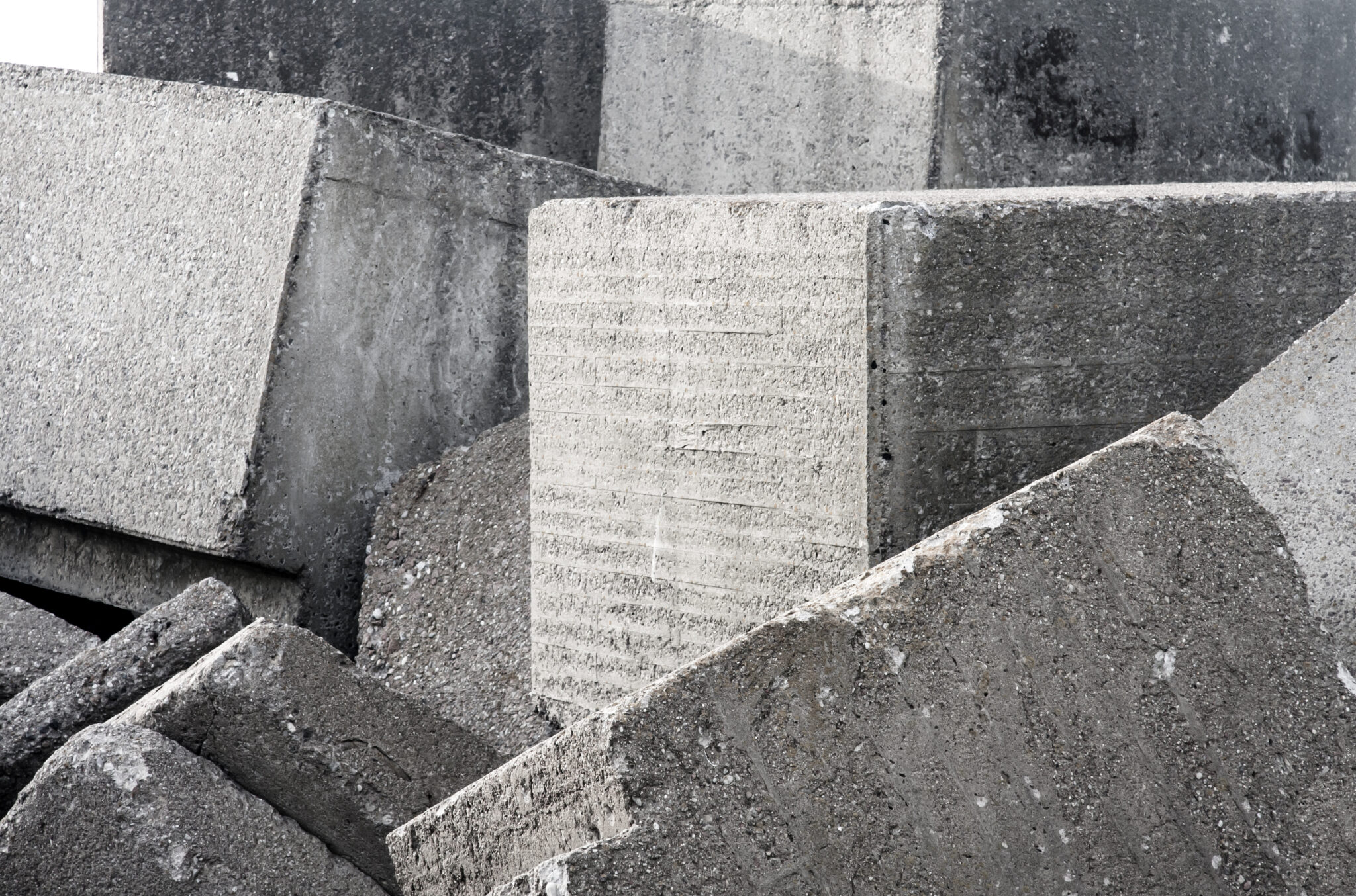Buildings use about 40% of global energy and generate over a third of greenhouse gas emissions. That’s why net-zero buildings matter. They’re designed to cut or offset emissions, so they add no extra CO₂ to the atmosphere. But how do we know when a project is truly net-zero and not just “greenwashed”? This is where standards and certifications act as the rulebook. In this blog, we’ll look at what net-zero means, the design and technologies behind it, leading case studies, and the global certifications from LEED to BREEAM that give credibility to net-zero claims.
SmartRock® Long Range Savings for Big Projects
What Does Net-Zero Mean, and How Is It Different from “Green” Buildings?
Net-zero buildings balance the carbon they emit with reductions or offsets.
| Type | Definition | Key Points |
| Net-zero energy | Produces as much renewable energy as it consumes | Focus on operational energy only |
| Net-zero carbon | Reduces emissions via clean energy + verified offsets | Can include some embodied carbon |
| Whole-life net-zero | Accounts for operational and embodied carbon | Most rigorous, requires verified offsets for remaining emissions |
All net-zero buildings are green, but not all green buildings are net-zero. Green buildings may address water, waste, or indoor air quality, whereas net-zero requires measurable, verified carbon balance.
Design and Materials: Foundations of a Net-Zero Building
Achieving net-zero starts with reducing energy demand through smart design and material choices. The guiding principle: “efficiency first”. The less energy a building needs, the easier it is to supply the remainder with renewables. A well-insulated, airtight structure acts like a thermos, keeping warm or cool air inside.
Energy-Efficient Design
Think of a net-zero building like a thermos: a well-insulated, airtight structure keeps temperature stable with minimal heating or cooling. Key strategies include:
Passive House principles:
- Super-insulated walls and roofs
- High-performance windows
- Heat recovery ventilation
- Airtight construction
- Energy savings: 40–60% less than typical new buildings.
Passive design strategies:
- Solar orientation: Capture winter sun, shade in summer
- Thermal mass: Concrete or stone floors store heat and coolness
- Daylighting: Maximize natural light to reduce artificial lighting
- Adaptive features: Green roofs, overhangs, operable facades, reflective surfaces
At One Angel Square in Manchester, UK, a building rated BREEAM Outstanding, features such as a double-skin glass facade and central atrium reduced energy demand by about 60%.
Want to optimize your building’s energy performance? Download our guide for sustainable construction to explore energy-efficient concrete mixes and design strategies for net-zero buildings!
Materials and Embodied Carbon
But net-zero is not just about how much energy a building uses. It also addresses embodied carbon, the CO₂ emitted in making and transporting construction materials like steel, glass, and cement. Let’s take a look at how net-zero builders reduce embodied carbon and which standards guide these practices.
| Issue | Why It Matters | Net-Zero Strategies | Standards/Examples | Impact |
| Cement production | Responsible for ~8% of global CO₂ emissions | Replace with fly ash, slag, or alternative binders | Low-carbon concrete mixes | Significant reduction in embodied carbon |
| Steel, glass, and other high-emission materials | High emissions from manufacturing & transport | Use recycled steel or reclaimed materials | Circular construction approaches | Cuts emissions by reusing existing resources |
| Timber sourcing | Unsustainable forestry adds hidden carbon | Use certified sustainable timber (e.g., FSC) | Supported in green building standards | Stores carbon, lowers overall footprint |
| Overbuilding/new construction | New builds carry heavy upfront emissions | Reuse or retrofit existing structures instead of demolishing | Adaptive reuse projects | Avoids most new material emissions |
| Certification requirements | Ensures reductions are measured and verified | ILFI Zero Carbon: requires 20% reduction + 100% offset of remainder | Verified offsets (credits, carbon-storing materials) | Guarantees credible, measurable outcomes |
The formula is simple but powerful: build smart first, then add renewables. By cutting energy demand and lowering embodied carbon upfront, net-zero buildings can meet the rest of their needs with clean power, and offset only what cannot be avoided.
Smart Tech: AI, Sensors, and Digital Twins in Meeting Net-Zero Standards
Good design is the foundation of a net-zero building, but technology ensures it performs in the real world. Smart systems act as the building’s brain and senses, verifying that energy use and carbon emissions stay aligned with modeled targets.
How Technology Supports Net-Zero
IoT sensors & building automation
- Monitor occupancy, temperature, CO₂, and lighting in real time,
- Adjust HVAC and lighting automatically when spaces are empty,
- Smart thermostats learn patterns to reduce waste.
AI & predictive analytics
- Detect hidden inefficiencies (e.g., recurring overheating, failing equipment),
- Recommend corrective actions before performance drifts off target.
Digital twins
- Virtual replicas used to test adjustments in simulation before applying them in the building,
- Help operators fine-tune systems and validate against certification standards.
Materials monitoring
- Smart concrete sensors like Giatec SmartRock® track curing and strength in real time,
- Reduce overuse of cement, the most carbon-intensive element in concrete production,
- AI-driven mix optimization helps cut clinker use while maintaining strength.
Energy dashboards & verification
- Provide ongoing metrics required for certifications like LEED Zero and ILFI Zero Energy,
- Typically require at least 12 months of verified operational data.
From real-time commissioning to predictive analytics, smart tech is the silent partner of net-zero construction, turning complex operations into automated, optimized processes and giving owners confidence that their buildings truly live up to their design promises.
Real-World Net-Zero Case Studies and Citywide Adoption
Net-zero isn’t an abstract goal, it’s being built and proven worldwide. These projects and policies show what’s possible when design, technology, and standards come together.
One Angel Square, Manchester, UK
The headquarters of the Co-operative Group, this 16-story office was among the world’s greenest when it opened. Rated BREEAM Outstanding with a record 95% score, its double-skin facade and central atrium maximize daylight and ventilation. On-site biodiesel CHP generates power and heat, while waste heat from IT servers warms the building. Rainwater is collected for reuse. These systems cut energy costs by 60%, making the building effectively carbon-negative, with a –75 kgCO₂/m² annual footprint.

Microsoft Silicon Valley Campus, USA
Built with LEED Platinum and net-zero ambitions, this campus uses mass timber to reduce embodied carbon, plus solar panels and battery storage for renewable energy . Designed to be 100% electric, it uses heat pumps instead of gas lines. Microsoft pursued ILFI Zero Carbon certification, which requires 12 months of proof of carbon-neutral operations, and also earned WELL certification for health and wellness . This project shows how corporate campuses can combine carbon goals with occupant well-being.

Masdar Eco-Villa, Abu Dhabi, UAE
In one of the world’s hottest climates, this 405 m² villa set a milestone as the first net-zero energy home in the UAE. Using 72% less energy and 35% less water than typical homes , it blends traditional cooling methods, like courtyards and shading, with insulated walls and rooftop solar. The Eco-Villa proves that net-zero is possible even in extreme conditions.
Unilever Logistics Park, Hefei, China
This distribution center pairs LEED Platinum with China’s Three-Star Green Building system, combining international and local standards. As part of China’s industrial push for low-carbon development, the project uses large solar arrays and battery systems to move toward net-zero operations.
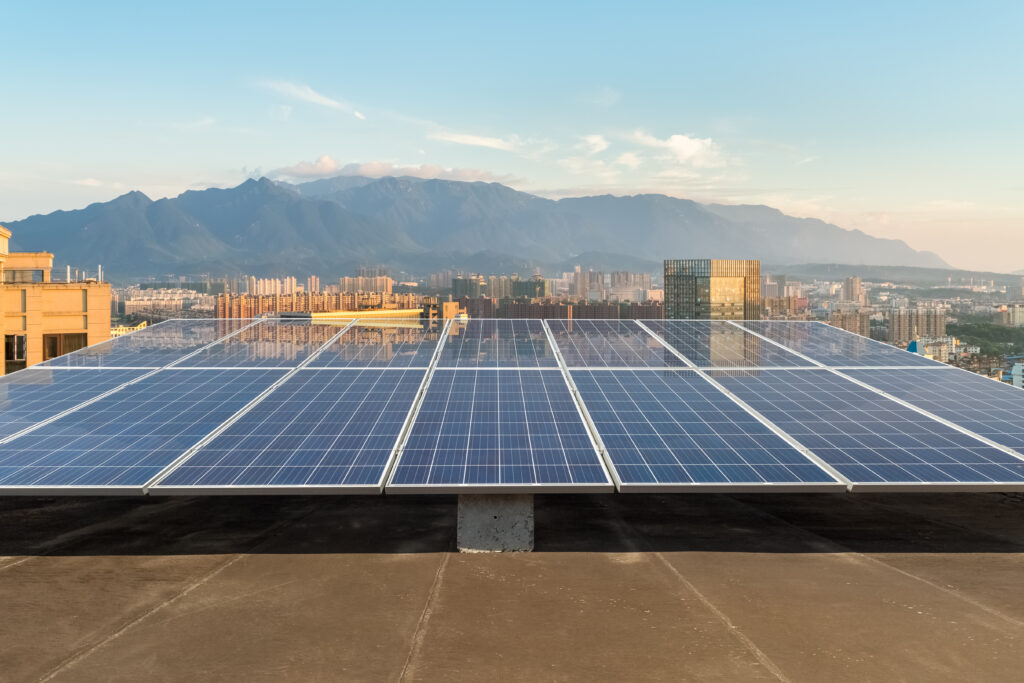
Beyond individual buildings, cities are also driving adoption at scale. Through the C40 Cities network and the World Green Building Council, 19 major cities including London, New York, Tokyo, and Sydney, have committed to ensuring that all new buildings are net-zero carbon by 2030 and that existing stock is retrofitted by 2050. Regulations are tightening in Canada as well, with Vancouver and Toronto moving toward net-zero energy-ready codes by 2030. In Europe, the revised Energy Performance of Buildings Directive (EPBD) requires all new buildings to be zero-emission by 2030, with an earlier target of 2028 for public buildings. It also mandates rooftop solar on new commercial buildings by 2026 and residential buildings by 2029.
Global Net-Zero Standards and Certifications
Understanding net-zero buildings requires knowing the major standards and certifications that define and verify them. Each program focuses on different aspects of sustainability: carbon, energy, water, materials, or occupant health, but together they form a global “language” of net-zero. Let’s take a look at the overview table of the key frameworks construction professionals should know:
| Certification / Standard | Region / Origin | Focus / Scope | Key Features / Requirements |
| LEED Zero | US / Global | Net-zero outcomes in Carbon, Energy, Water, Waste |
Requires prior LEED certification 12 months of verified operational data Carbon option: no net GHG emissions (offsets allowed) Energy option: 100% renewable balance Certification valid for 3 years, data resubmission required |
| BREEAM | UK / Global | Holistic sustainability (energy, water, materials) |
Credit-based system, ratings from Pass to Outstanding ~50% of credits target energy/carbon reduction New credits for net-zero transition planning No standalone net-zero label yet |
| Living Building Challenge (LBC) | USA / Global | Net-positive, regenerative design |
Generates ≥105% of energy needs on-site Net-positive water use Toxin-free materials 12 months post-occupancy verification Very few projects achieve full certification |
| ILFI Zero Carbon | USA / Global | Net-zero operational + partial embodied carbon |
12 months verified operational data All-electric (no combustion)100% renewable energy (on/off-site) ≥20% reduction in embodied carbon plus 100% offset of construction emissions Third-party audited |
| ILFI Zero Energy | USA / Global | Net-zero operational energy |
12 months of verified data 100% renewable energy No on-site combustion facilities Often paired with Zero Carbon for comprehensive certification |
| WELL Building Standard | USA / Global | Health, wellness, indoor environment |
Focus on air, water, light, thermal comfort, and mental health No direct energy/carbon requirements Certification levels: Silver, Gold, Platinum Often paired with LEED/BREEAM to support occupant well-being |
| Passive House / PHIUS | Germany / USA | Ultra-low energy demand |
Annual heating demand ≤15 kWh/m² Super-insulated, airtight envelopes High-performance windows & continuous ventilation with heat recovery PHIUS Zero combines passive design + renewable offsets to achieve net-zero |
| EDGE | Global (emerging markets) | Affordable green building efficiency |
EDGE Certified: ≥20% savings in energy, water, materials EDGE Advanced: ≥40% energy savings EDGE Zero Carbon: meets Advanced + 100% renewable energy or verified offsets At least 12 months operational data required User-friendly app for design |
| Zero Carbon Building (ZCB) | Canada | Net-zero carbon |
Two pathways: Design (modeled) & Performance (operational) Ultra-low energy design No on-site fossil fuels (offsets allowed) Annual carbon balance through renewables/offsets Embodied carbon reporting & partial offsets Supports Canada’s 2030 net-zero-ready goals |
| Green Star | Australia | Holistic sustainability + carbon |
Rated 1–6 Stars: 6 Star = World Leadership Green Star Buildings tool emphasizes carbon reduction & net-zero operations by 2030 Works with Climate Active for carbon-neutral recognition |
| NABERS | Australia / UK / NZ | Operational performance |
1–6 Star rating for energy, water, waste, indoor environment 6 Star Energy = market-leading, often net-zero Carbon Neutral certification available when paired with renewable supply/offsets Focus on real building performance |
| Estidama – Pearl Rating | UAE (Abu Dhabi) | Desert-focused sustainability |
Rated 1–5 Pearls Covers energy, water, materials, innovation, governance 5-Pearl building = >40% energy reduction + renewable integration Supports UAE’s net-zero by 2050 strategy |
| Three-Star Green Building | China | National sustainability |
Rated 1–3 Stars; 3-Star = highest Covers energy, water, materials, indoor environment Top-rated projects often 50%+ better than code Increasingly used to pilot net-zero projects |
| SKA Rating | UK / Global | Interior fit-outs |
Rated Bronze, Silver, Gold Focus on energy, CO₂, water, waste, materials in non-structural projects Complements BREEAM/LEEDGold fit-outs often include efficient lighting, HVAC, supporting net-zero goals |
As the table shows, some certifications focus on verified performance (LEED Zero, ILFI Zero Carbon, NABERS), while others act as design frameworks (LEED, BREEAM, Green Star) guiding projects toward net-zero. Rather than competing, they complement each other, creating a shared language that helps the building industry measure, certify, and accelerate real progress toward net-zero outcomes.
SmartRock® Long Range Savings for Big Projects
Government Incentives, Policy Drivers, and Future Trends
Net-zero buildings are growing rapidly as policy, economics, and climate goals align. Governments are offering both incentives and mandates to accelerate adoption
Government Incentives & Policy Drivers
Governments are increasingly aligning climate goals with economic incentives and regulatory mandates. Policy support and codes are key accelerators for net-zero construction, reducing upfront risk while setting standards for the industry.
| Type | Examples | Impact |
| Incentives | Tax credits, grants, rebates (U.S. Inflation Reduction Act, Canada retrofit fund), zoning bonuses (NYC), cash rewards (China 3-Star projects) | Improves business case beyond operational savings |
| Mandates / Codes | EU: zero-emission new buildings by 2030, public by 2028; CA: solar on new homes; UK: 80% CO₂ cuts by 2025 | Forces compliance, standardizes net-zero targets |
| Retrofit Policy | NYC Local Law 97, EnerPHit programs | Encourages upgrades of existing building stock |
Strategic policy incentives and mandates are not only driving adoption but also providing the foundation for widespread systemic change in the construction sector.
Emerging Technology & Infrastructure Trends
Smart technologies are transforming net-zero from a design aspiration into operational reality. Innovations in energy management, automation, and grid interactivity are essential for achieving and verifying performance.
- Microgrids + Battery Storage: Enables 24/7 renewable energy use; boosts resilience for hospitals, campuses, data centers.
- EV Integration & Vehicle-to-Grid: Parked EVs supply energy back to buildings.
- Alternative Energy: Green hydrogen for high-temp or backup energy; electrification remains primary path.
- Embodied Carbon Focus: Policies push low-carbon steel, concrete, recycled content; “carbon budgets” may cap lifecycle emissions.
- Smart Grid Interaction: Buildings reduce peak demand through demand-response automation; IoT + AI optimize operations without occupant impact.
Technology is the silent partner of net-zero construction, enabling smarter, more resilient, and verifiable building operations that align with both environmental and economic goals.
Finance & Investment Drivers
Net-zero buildings are becoming financially compelling. Investors and developers increasingly recognize that sustainability delivers tangible economic returns in addition to environmental benefits.
| Driver | Detail | Benefit |
| Asset Value | Certified green buildings achieve 7% higher resale value on average | Incentivizes developers to build net-zero |
| Investor Alignment | >150 companies signed WorldGBC Net Zero Commitment | More climate-aligned investment flows |
| Financing Advantages | Banks & pension funds prefer ESG-compliant, certified projects | Lower borrowing costs, easier capital access |
| Government Leadership | Mandates for new public buildings | Sets benchmarks for private sector |
Financial incentives, aligned with environmental standards, create a strong business case for early adoption and long-term profitability of net-zero projects.
Challenges and Criticisms in Net-Zero Construction
Net-zero buildings promise environmental and economic benefits, but achieving these standards comes with technical, financial, and operational hurdles. Understanding the key challenges helps the industry address risks proactively.
Cost and Complexity
- High upfront costs for triple-glazed windows, solar panels, advanced modeling, and certification.
- “Green premium” is decreasing as technologies like heat pumps, LEDs, and smart facades scale.
- Complexity arises from tight coordination between architects, engineers, and contractors; integrated delivery and commissioning are essential.
Knowledge Gaps and Skills
- Many builders and operators lack training in net-zero methods (airtightness, Passive House details, advanced automation).
- Misuse of building automation or smart systems can reduce performance.
- Widespread training is needed across design, construction, and operations.
Greenwashing and Credibility
- Some projects rely heavily on offsets or renewable credits rather than direct emission reductions.
- Proliferation of labels can dilute credibility.
- Rigorous standards (ILFI Zero Carbon, CaGBC ZCB) limit offset use and require verified efficiency.
- Government policy alignment strengthens trust and prevents weak claims.
Performance Gaps
- Design models may not match actual building performance.
- Poor installation, commissioning, or occupant behavior can reduce efficiency.
- Standards like LEED Zero and ILFI now require 12 months of post-occupancy verification.
Retrofit Challenge
- Most 2050 buildings already exist, making retrofits critical but costly and disruptive.
- Deep retrofits may involve recladding towers or system replacement in occupied spaces.
- Programs like EnerPHit show feasibility, while laws like NYC Local Law 97 provide policy incentives.
Climate and Grid Variability
- Net-zero energy annually does not guarantee year-round independence.
- Buildings may export solar in summer and import fossil power in winter.
- Smart controls, storage, and grid interaction are essential for resilience and peak management.
Moving Forward
Challenges are real but solvable. Costs are falling, skills are improving, and greenwashing is countered by stricter standards and transparency. Criticism has already led to better verification and disclosure. With each success, net-zero becomes more practical and credible, turning today’s challenges into tomorrow’s best practices.
Conclusion
Net-zero buildings are moving from niche to mainstream, with certifications and standards acting as the rulebook guiding this shift. Frameworks like LEED, BREEAM, and the Living Building Challenge not only set design and performance targets but also ensure credibility, claims must be proven, audited, and displayed. This shared “language” of net-zero is spreading worldwide, with groups like the World Green Building Council aligning regional and global efforts.
Technology from IoT sensors to AI dashboards helps verify performance, optimize operations, and reduce material waste, making net-zero not just achievable but sustainable. The movement thrives on collaboration between policy, design, and innovation. While challenges remain, progress is accelerating. Firms embracing these standards today position themselves as leaders in shaping efficient, low-carbon, and resilient buildings for the future.
Ready to take your net-zero building projects to the next level? Learn more about SmartRock to ensure concrete strength, reduce waste, and save time!

